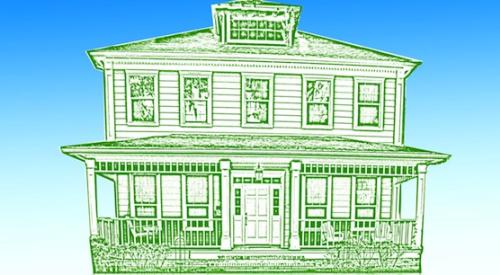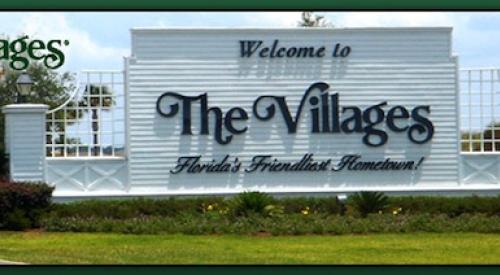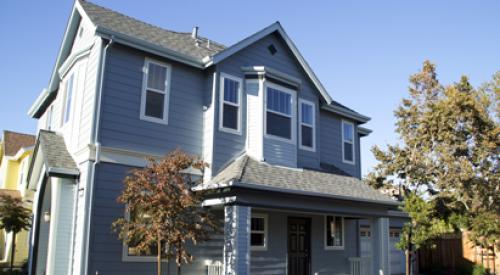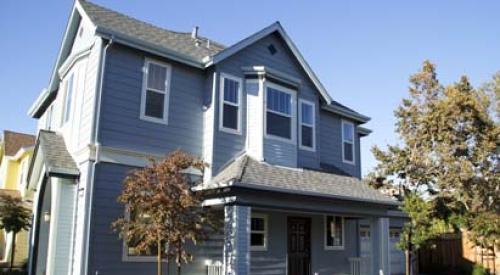For more than a year, executives and analysts have said the Washington, D.C., market has turned around. That is not the case. While we agree D.C. is likely to be one of the first markets to show improvement and the new home market will stabilize before the resale market stabilizes, we believe significant improvement will not occur until resale listings fall by 30 percent or more. Here is why.
DemandThe underlying demand fundamentals for a housing recovery are in place in the Washington, D.C., metro area. Unemployment remains one of the lowest in the U.S. at 3.1 percent and, while job growth has slowed, average job growth remains at a solid 1.1 percent rate, Much of the growth is occurring in the suburbs near the new homes' locations. A significant portion of this growth is occurring within the professional and business services sectors — generally higher-paying jobs — which has contributed to incomes rising at approximately 4 percent per year. With annual population and household growth in excess of 1 percent, there is a steady stream of potential buyers in this market.
However, these buyers need to overcome buyer confidence issues that have stemmed from tightened credit, negative media coverage, and the sluggish resale market.
At this point, we believe sales volumes are likely to remain relatively flat in the D.C. market in 2008, showing slight recovery in 2009. The rolling 12-month resale volume in the D.C. metro area has fallen more than 40 percent since peaking in May 2005. We just don't see much more decline in sales volumes, which have already fallen below the levels of the late 1990s.
SupplyNew home supply has pulled back significantly during this downturn, but the sluggish resale market has significantly increased the number of homes for sale. Builders have shown considerable restraint in construction activity, with annual permit volumes down more than 40 percent to 19,000 permits issued in the last 12 months. But listings in the resale market continue to rise, nearly doubling in the last two years to 40,000 resale homes for sale. Given current sales rates, this translates to nearly nine months of supply, which has contributed to a prolonged recovery in the new home market, especially since there is a large number of resale homes for sale that were built in the last five years and easily compete with new homes on price and value per square foot.
AffordabilityPrices continue to correct in the D.C. market, as sellers in the resale market are loosening the reins on asking prices, partially in response to the tremendous discounts that home builders have been offering in the market for quite some time. The S&P/Case-Shiller Home Price Index, which measures same-home resale sales, shows that resale prices in the D.C. metro area have declined only 8 percent since reaching their peak in May 2006. Falling prices have helped to alleviate some of the affordability concerns in D.C., but annual housing costs for the median-priced detached home still comprise nearly half of the median household income. We see prices continuing to fall in this market until housing costs comprise only 32 percent to 37 percent of income, lagging the recovery in sales volumes.
| EMPLOYMENT | AFFORDABILITY | PERMITS | ||||||||||
| Short-Term Outlook/Grade | 1-Year Payroll Employment Growth | 1-Year Growth Rate | Unemployment Rate | Median Resale Home Price | Resale Housing Costs as % of Income* | Housing Cycle Barometer** | 12-Month Single-Family Permits | 1-Year Single-Family Growth | 12-Month Total Permits | Total Permits as % of Peak Permits*** | ||
| 1 | Houston | 64,400 | 2.6% | 4.1% | $157,000 | 27% | 5.3 | 46,421 | -16% | 66,536 | 89% | |
| 2 | Atlanta | 52,900 | 2.2% | 4.4% | $175,386 | 24% | 4.2 | 38,188 | -37% | 52,115 | 70% | |
| 3 | Phoenix | 51,600 | 2.7% | 3.2% | $255,000 | 39% | 6.4 | 32,662 | -32% | 41,745 | 60% | |
| 4 | Dallas | 58,900 | 2.9% | 4.0% | $169,000 | 27% | 5.1 | 20,471 | -35% | 29,879 | 40% | |
| 5 | Riverside-San Bernardino | 51,300 | 4.1% | 6.1% | $370,000 | 60% | 8.5 | 20,117 | -51% | 24,450 | 42% | |
| 6 | Charlotte | 21,200 | 2.6% | 4.8% | $171,000 | 27% | 3.6 | 17,741 | -14% | 23,516 | 94% | |
| 7 | Chicago | 29,500 | 0.8% | 5.3% | $262,000 | 39% | 6.4 | 15,710 | -41% | 30,642 | 68% | |
| 8 | Orlando | 29,600 | 2.7% | 4.0% | $242,500 | 40% | 6.9 | 15,246 | -41% | 21,970 | 61% | |
| 9 | Las Vegas | 13,900 | 1.5% | 5.0% | $295,000 | 47% | 7.0 | 14,281 | -47% | 20,216 | 50% | |
| 10 | Washington D.C. | 37,500 | 1.6% | 3.1% | $419,994 | 49% | 8.8 | 13,765 | -23% | 19,036 | 50% | |
| 11 | Austin | 29,500 | 4.1% | 3.5% | $190,800 | 33% | 5.4 | 13,663 | -29% | 22,420 | 82% | |
| 12 | Raleigh-Cary | 11,400 | 2.3% | 3.6% | $200,000 | 29% | 4.4 | 13,094 | -5% | 16,427 | 93% | |
| 13 | Nashville | 7,300 | 1.0% | 3.5% | $162,000 | 28% | 5.2 | 12,550 | -12% | 14,285 | 78% | |
| 14 | San Antonio | 14,400 | 1.8% | 4.0% | $154,200 | 30% | 5.4 | 11,022 | -26% | 14,628 | 66% | |
| 15 | Fort Worth | 19,900 | 2.4% | 4.0% | $120,900 | 21% | 5.2 | 10,867 | -41% | 14,904 | 39% | |
| 16 | Seattle | 50,900 | 3.6% | 3.5% | $419,000 | 59% | 9.2 | 9,723 | -18% | 20,622 | 75% | |
| 17 | Tampa | 15,300 | 1.2% | 4.3% | $193,000 | 35% | 6.1 | 9,439 | -60% | 13,557 | 36% | |
| 18 | Denver | 17,400 | 1.4% | 3.8% | $255,000 | 39% | 6.2 | 9,400 | -41% | 15,038 | 53% | |
| 19 | Portland | 15,500 | 1.5% | 5.0% | $295,000 | 48% | 9.8 | 9,084 | -23% | 14,059 | 71% | |
| 20 | Minneapolis | 16,400 | 0.9% | 4.1% | $242,000 | 33% | 5.6 | 8,777 | -39% | 11,543 | 41% | |
| Sources: Bureau of Labor Statistics; Census Bureau through the month ending August 2007; John Burns Real Estate Consulting. Data on all markets available at www.realestateconsulting.com *Proprietary affordability scale with 0 meaning most affordable time since 1983, 5 meaning median affordability, and 10 meaning least affordable time. **Annual Mortgage Costs +1/7th of the down payment divided by income. *** Peak activity since 1985. |
||||||||||||
| Author Information |
| Chris Porter of John Burns Real Estate Consulting contributed to this report. John Burns helps many of the largest companies in the industry with strategy and monitoring market conditions. He can be reached at jburns@realestateconsulting.com. |











